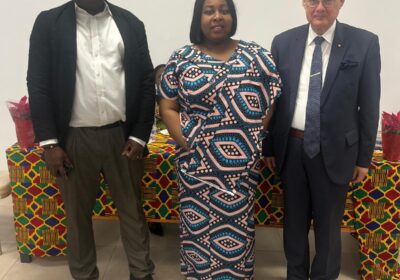West Africa Disaster Management Chiefs Converge on Accra, Ghana Strategize on Resilience Plan By Raymond Enoch
I
 mpact of disasters on Communities in West Africa have witnessed an intensity in recent times. In a bold push actions to curb the rising disaster threats across the region therefore ,top disaster management and civil protection officials from ECOWAS Member States meet in Accra for the 16th Consultative Session of the Regional Committee for Disaster Management in West Africa (GECEAO).
mpact of disasters on Communities in West Africa have witnessed an intensity in recent times. In a bold push actions to curb the rising disaster threats across the region therefore ,top disaster management and civil protection officials from ECOWAS Member States meet in Accra for the 16th Consultative Session of the Regional Committee for Disaster Management in West Africa (GECEAO).
The three-day high-level event, held from May 20–22 and spearheaded by the ECOWAS Directorate of Humanitarian and Social Affairs, marks a critical turning point in the region’s approach to disaster resilience.
Opening the summit, Dr. Mohammed Ibrahim of ECOWAS emphasized the staggering toll of disasters across West Africa—over $1 billion in losses in the past 25 years—driven by environmental degradation, climate change, and urban pressures. “We must prioritize resilience now, or risk further humanitarian crises,” he warned.
The ECOWAS 2025 Humanitarian Response Initiative, unveiled during the forum, targets more than 600,000 vulnerable individuals, focusing on food security, WASH, healthcare, displacement, and early recovery. The initiative also integrates cutting-edge technologies for faster, more dignified aid delivery and improved regional preparedness.
Representing Nigeria’s NEMA, Alhaji Idris Mohammed stressed the urgent need for united action. “Floods, epidemics, and conflicts are reversing development. Only through cooperation and shared expertise can we build a stronger, safer West Africa,” he said. Nigeria’s own strategy includes training new generations of disaster professionals through university partnerships.
Ghana’s NADMO Director General and GECEAO Chair, Major (Rtd.) Dr. Joseph Bikanyi Kuyon, praised Ghana’s legislative strides in disaster management and announced a forthcoming national Disaster Risk Financing Strategy. “Let’s turn data into action,” he urged. “Hydro-meteorological warnings must trigger real, life-saving responses.”
As the summit continues, it serves not only as a policy workshop but as a powerful signal of West Africa’s shared determination to confront disasters head-on—with unity, innovation, and resilience at the core.










